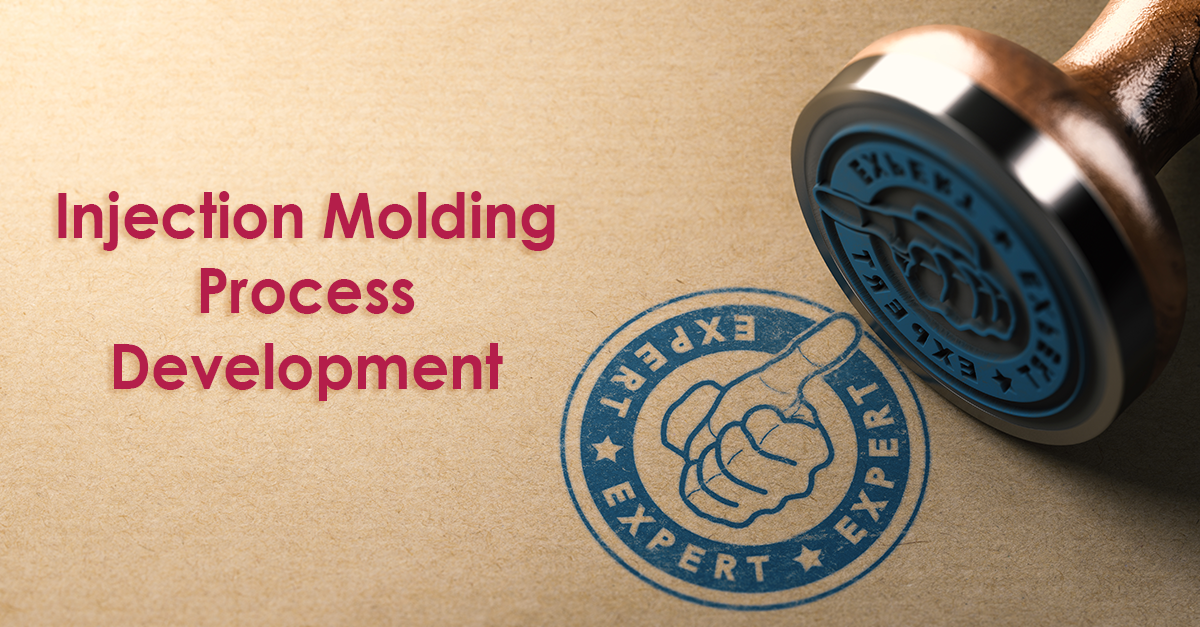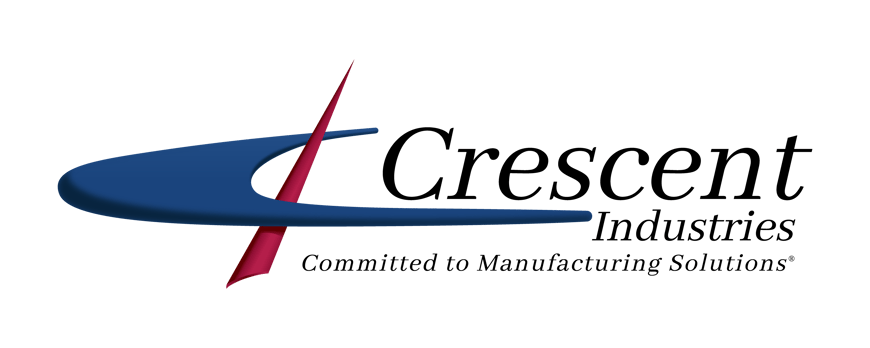
An Expert's Approach to Injection Molding Process Development
Are you curious about the innovation behind your flawlessly molded plastic products? Welcome to the injection molding process development world, where precision and innovation converge. This article explores the details that shape the injection molding process, unraveling its key steps that transform designs from concepts into final products.
Join us as we navigate Crescent Industries’ holistic approach to injection molding. We’ll also provide tips and advanced solutions for optimizing the injection molding manufacturing process.
What Is Injection Molding Process Development?
Injection molding process development is a meticulous procedure focused on fine-tuning various molding parameters to achieve optimal outcomes. Essential molding variables like temperature, pressure, injection speed, and cooling time undergo strategic adjustments.
Achieving the perfect balance throughout the different injection molding stages is crucial for optimizing the injection molding process.
Why Is Process Development Important in Injection Molding?
Process development ensures that molded parts meet specified standards in quality, consistency, and cost-effectiveness. Proper process optimization requires meticulous attention to detail and a deep understanding of materials, tools, and process variables.
In addition, process development reveals possible manufacturing complexities, minimizing uncertainties before part production. It also ensures production feasibility and is a preventive measure against part failure. Overall, expert process development is critical to a project's success.
Critical Steps in the Injection Molding Process Development
Below is a detailed look into the critical stages in the injection molding process that pave the way for precision and excellence.
Part Design and Analysis
Injection molding process development begins with product design and evaluation. At this stage, engineers meticulously explore and utilize Design for Manufacturability (DFM). DFM is an art form that combines technologies and science to optimize plastic product design and meet the customer’s quality and cost expectations.
To succeed, DFM requires a collaborative effort between molders, clients, and Original Equipment Manufacturers (OEMs). It must also occur early to allow injection molding process technicians to execute changes quickly and cost-effectively.
Mold Design Optimization
This stage is critical in crafting the perfect mold. It involves careful attention to the following mold aspects, each crucial to ensuring a smooth injection molding process.
- Mold base and cavity layout: The mold comprises the base, mold cavities, and core inserts. Precision when designing these components is vital for a consistent molding process. The mold must also be durable, easy to maintain, and simple to disassemble and assemble for repairs.
- Runner and gate design: The gate and runner system impacts the efficiency of the molding process by facilitating plastic flow. Gate size, location, and shape help optimize material flow, prevent defects, and minimize part stress. The runner system also reduces pressure drop, ensures even material distribution, and prevents dead spots where molten plastic accumulates.
- Cooling system design: The cooling system controls temperature and influences plastic material solidification and shrinkage. Achieving uniform cooling with strategically placed channels helps optimize the cycle time.
- Ejection system design: The ejection system consists of ejector pins and a hydraulic system that needs careful design to prevent damage during ejection. Factors like part geometry, stiffness, and undercuts influence their design.
- Mold material and surface finish: Material selection for the mold impacts its lifespan and the quality of the finished product. The high melting temperature, good thermal conductivity, and excellent wear resistance are crucial mold characteristics. In addition, precision machining of the mold helps eliminate surface defects. Meanwhile, surface finishing, like bead blasting or polishing, ensures flawless mold surfaces. The degree of finishing can impact the initial costs and timeline of the mold tooling process.
Process Parameter Setting
At this phase, injection molders meticulously adjust various variables to optimize manufacturing. These crucial parameters include:
- Injection pressure and speed: This variable determines how rapidly molten plastic fills the mold cavity. The pressure must be sufficiently high to ensure complete mold cavity filling without causing defects, such as flash or distortion.
- Injection temperature: This parameter influences plastic material flow and viscosity. Molders can monitor and control this parameter through thermocouples strategically placed within the mold cavity. Maintaining a stable temperature ensures uniform heating of the plastic material.
- Holding pressure and time: Holding pressure prevents material backflow into the injection unit, while the holding time allows for complete cooling and solidification. These parameters are intricately balanced based on the part's wall thickness and complexity to ensure a flawless molding process.
- Ejection: A smooth and consistent ejection process prevents damage to the part and the mold. Ejection force is tailored to the part's size and complexity, ensuring a seamless transition from mold to the final product.
Through systematic experimentation and data analysis, Crescent Industries experts can set each parameter optimally.
Pilot Production and Evaluation
This step marks the shift from theory to practical application. Small-scale production runs allow us to validate the optimized process in real-time. This stage helps identify any unforeseen challenges and provides an opportunity for further refinement.
Close monitoring and evaluation of the produced parts enable our designers and engineers to fine-tune the process further, ensuring a seamless transition to full-scale production.
Process Validation and Documentation
This final step ensures the developed molding process is effective and consistently reliable. It involves rigorous testing, inspection, quality control, and data analysis to validate the process's capability.
Comprehensive documentation of parameter settings, materials, and quality control measures is a blueprint for future production runs. This stage is pivotal for maintaining quality standards, meeting regulatory requirements, and fostering continuous improvement in the injection molding process.
Fundamental Steps in the Injection Molding Process
The plastic injection molding process is a carefully orchestrated sequence of four steps. The basic structure of injection molding machines includes:
- Hopper: receives the plastic pellets/granular material
- Cylinder: heats the material
- Nozzle: injects the melted plastic
- Mold: receives and shapes the molten material
This system ensures the efficient and consistent production of plastic products through the following injection molding process steps:
- Clamping: This is the initial step in injection molding, where the mold's halves close in a clam-shell style to prepare for material injection. The clamping unit applies the force needed to shut the mold’s halves as the material fills securely.
- Injection: The plastic compound in pellet or granular form is loaded into the hopper and later moves into the cylinder, where it is melted. After clamping, the molding machine’s injection unit pushes the molten plastic material into the mold. Maintaining consistent temperature throughout the injection process is crucial as it determines the material’s form within the mold. In addition, proper design of the runner, gate, and vents ensures optimal mold filling by allowing displaced air to escape.
- Cooling: Post-filling, the cooling stage allows the molten plastic to cool and solidify. Cooling time varies based on part thickness and resin type. Mold design incorporates internal cooling or heating lines, cycling water through to maintain a uniform cooling temperature.
- Ejection: After cooling, a clamping motor slowly opens the mold halves to facilitate the safe removal of the final product. With the mold open, the ejector pins push the solidified product out, allowing the part to fall into a bin waiting below the mold. Once the product is released, the mold can clamp again, initiating the next cycle of the injection molding process.
These critical steps form the basis of the injection molding process, transforming raw materials into precise and usable end products.
Injection Molding Process Optimization Technique
The injection molding process may encounter various issues that affect product functionality. Here are some common issues and a few tips and tricks for optimizing.
- Sink marks and warping: Sink marks are tiny depressions on molded flat surfaces, while warping refers to unexpected bends due to irregular internal shrinkage. These defects result from high melt or mold temperature and defective mold structure, compromising product aesthetics. Solutions include gradual cooling, maintaining even wall thickness, and optimizing holding pressure and injection time.
- Flash and part sticking: Flash is the excess material at the product’s edges. Part sticking occurs when the molded part adheres to the mold surface. Causes include poor exhaust system design and inadequate clamping force. You can solve it by proper exhaust channel sizing, applying high clamping force, redesigning the mold, and optimizing the injection pressure.
- Short shots and burn marks: Short shots result from incomplete mold cavity filling, and burn marks are unsightly rust-colored marks on the surface. Insufficient injection pressure and inappropriate gate design contribute to these defects. Solutions include improving ventilation, adjusting mold temperature, reducing injection speed, and optimizing molding speed.
- Gas traps and voids: Air trap and void defects are from trapped air or bubbles that can compromise the product’s structural integrity. They occur because of uneven filling and poor ventilation. Possible solutions involve redesigning the runner system and using materials with lower viscosity.
Addressing these issues requires skill in adjusting molding parameters, material selection choices, and mold design.
Let Us Take Care of All Your Injection Molding Needs
Collaborating with a seasoned injection molder and mold builder like Crescent Industries can make all the difference in ensuring product development success. With our 75 years of experience and commitment to delivering high-quality results, we are the partner you need to take care of all your injection molding needs. Contact us today to elevate your plastic manufacturing capabilities.
Topics:
Related Articles
-
Dec 10, 2024
Injection Molding Burn Marks: Causes and How To Avoid Them
Read MoreThe injection molding process can be complicated. If you rush your project or do not pay close...
-
Apr 02, 2024
An Expert's Approach to Injection Molding Process Development
Read MoreAre you curious about the innovation behind your flawlessly molded plastic products? Welcome to the...
-
Nov 29, 2023
What is Important to the Plastic Injection Molding Process?
Read MorePlastic injection molding is a smart and flexible way of making different products. It’s a method...
